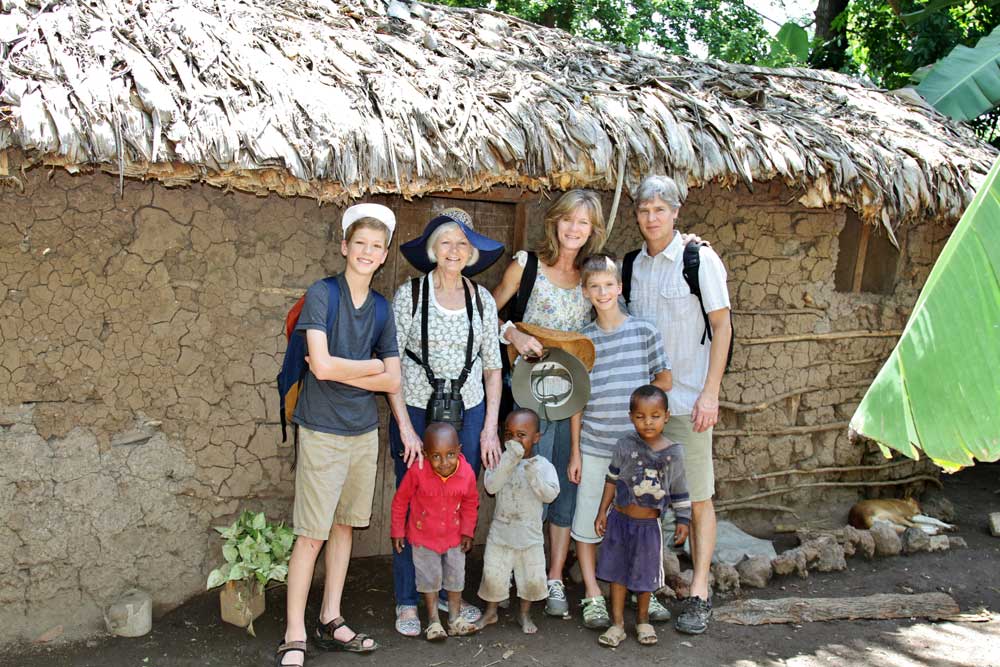
It was the trip of a lifetime. The very moment we met our guide at the Land Cruiser, that was to be our wheels for the next 10 days, we knew. Our Tanzania family safari was going to be much more than a vacation.
We started learning about Tanzania, its history and its people, during the drive from Kilimanjaro Airport to our hotel in Arusha. Many laughs, and the facts stuck. With lush gardens and comfortable rooms, the Arusha Hotel as a first overnight, was a welcome respite after the long flight from the US.
The next morning, a hearty breakfast – the first of many – and a briefing of what to expect, had us rearing to go. We were almost surprised by how much we enjoyed the day spent in and around Arusha. My boys, 11 and 13, were intrigued.
We were provided with insights into the school system, religious backgrounds, economic development and social structures. Fascinating is the mass influx of inexpensive motorcycles from China, leading into the development of a single-passenger taxi system!
Tanzanians are proud of their infrastructure development, the paved road leading from Arusha being a prime example. Along the way, the patchy vegetation growth was evidence of onset of the short November rain season. Trees became bigger as we neared the Rift Valley escarpment, and the bustling village of Mto wa Mbu, ‘River of the mosquito.’
A highlight was the village walk, starting out in a banana plantation. Our local village guide in Mto wa Mbu, Sammy, gave a relaxed companionship that allowed us brief glimpses into life in the foothills of the valley. We simply had to taste banana beer, and this was also a good spot for purchasing stunning Maasai cloth. These cloths are traditionally worn by the cattle herdsmen as they dot the landscape draped in mostly vibrant red.
Unforgettable was the next day’s walk to the elephant caves. The aged and agile local guide introduced us to many of nature’s secrets, and the reverence at the site was palpable. Elephants come here to excavate minerals from the ground, their tusk marks, and dung (!) clearly visible along the walk. We heard and smelt these gentle giants, and treasured being in their near presence, outside of our own everyday comfort zones.
Next stop was the Ngorongoro Crater, and admittedly, we did not expect one area to be teeming with so much life! Cameras kept clicking away, and the rewards were many. A lion kill right next to the road, complete with carcass, and a pride with ten lion cubs. Most fascinating was watching a lioness and her cub, probably from a foreign pride, unobtrusively trying to edge in to gain access to the kill.
We had a good laugh watching three hippos’ multiple attempts to scale the banks of a shallow stream, to finally plop down on the sunny sand bank. By now, our guide Charles had become like a knowledgeable brother, and the facts and humorous tidbits kept coming our way. We enjoyed a picnic lunch, before heading back to our hotel for a swim, and incredible view of the sun setting over Ngorongoro. Clearly, life is good in the Crater basin.
En route to Serengeti National Park, we stopped at Olduvai Gorge (or Oldupai, as pronounced by the locals), one of the most important paleoanthropological sites in the world. Truly informative, and a definite must-do. Armed with knowledge, one comes to appreciate the region and its people even more.
There are more than 120 distinct ethnic groups in Tanzania, each with an own tribal language. However, the lingua franca is Swahili and as a sign of mutual respect, tribal languages are reserved for conversations with one’s own. Respect and hospitably are common values in this region, which is evident too by the many times each day you’d encounter a hearty Karibu, ‘Welcome’!
Serengeti was everything you’d imagine from a safari on the Roof of Africa, and then some. Four cat species sighted within 20 minutes, including a cheetah so recently overfed that it could barely walk, and a group of lion youngsters playing hide and seek with a huge lizard. Engraved in our minds are the thousands of wildebeest running single-file across the plains, the first of the arrivals preparing for the calving season in January and February. Antelope were plenty, as were the herds of giraffe, and buffalo. Flocks of storks arrived overnight on the plains surrounding one of our safari camps, and birds of prey circle the skies.
Accommodations were luxurious throughout, the food mouthwatering and prepared with care, and the people welcoming and friendly.
If you asked our oldest son, what he holds most dearly, it is that moment when he met a young herdsman, age similar to his own, coming down a reef with his goats and cattle. The handshake and smile they shared before briefly conversing in English, instilled in him a sense of appreciation and understanding that no textbook ever will.
More than often, we talk about our Tanzania safari, and we relentlessly plot our return. Most precious to us are the connections made, thousands of pictures, countless recollections of experiences, and the memories of the distinct smells and sounds of Africa. Our Family Safari could not have been more rewarding. We will be back, and we hope to see you there!

